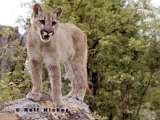 It is time now to finish the story of the medicine walk and apprenticing on the CA Fall Fast last October. The night before the fasters were due to return, I had a powerful dream. The dream showed me that something had shifted in my psyche as a result of the healing work I did on the medicine walk.
It is time now to finish the story of the medicine walk and apprenticing on the CA Fall Fast last October. The night before the fasters were due to return, I had a powerful dream. The dream showed me that something had shifted in my psyche as a result of the healing work I did on the medicine walk.
I dreamt I was in a forest, in a ravine with a wood log overhead that bridged the lower place. Suddenly a stream of animals started running by overhead—wild animals, like mountain goat, rabbit, maybe fox or coyote, deer… I didn’t see them all clearly, but felt it was a gift to see them so close. I wanted them to stay with me longer. (Remember the video I described in the post entitled Mixed media and more sex for the New Year? It had a very similar stream of animals, running from a forest fire. Amazing!)
Then I realized the animals must all be running from something, and the only thing it could be was a mountain lion. Then I saw the mountain lion. It was walking around coolly and calmly, and it was stalking me!
Now the mountain lion and I were in a more open space, by the ocean, near where the forest was. It was still forested, with some trees on a peninsula. The mountain lion was after me, but suddenly I was the mountain lion and it had changed into a man and I was taking huge bites out of his legs and chest. I sank my teeth in and the flesh bled—deep and big bites, but I didn’t bite all the way through or tear the flesh. It felt really good to sink my teeth in and bite like this. Wow!
When I woke and reflected on the dream, I remembered a dream I had back in 2007 when I first started working specifically with anger with a naturopath (after a short relationship ended because my anger scared the man I was involved with). In the earlier dream, I had gone to a doctor in a hospital for some healing, and she pulled a limp cougar out of a garbage can. She was going to use some of its life energy to heal me, but I knew it was a crime to keep the cougar half-dead and use its energy this way. (For more about this dream, see the blog entry Cougars: Spirit Guides on the Vision Fast.)
Now the mountain lion of my psyche is very robust, alive, and powerful. All are afraid of it, and it is me. I wonder if this is connected to the balls I claimed on the medicine walk, stepping into my masculine energy, power, and ability to look after myself. I am no longer stalked—I am the stalker. Bear in mind that this is not literal! But what I take from the dream is that like the cougar, I have stepped into my true nature more fully. It is in the cougar’s nature to bite its prey. And in the dream it was in its full power—no longer vampirized as a source of life energy.
I do feel the currents of this shift in my daily life. I feel a more consistent sense of having all the resources I need within me, accessible to me, available when needed. Together with this is a sense of completeness, so there are more elements of my nature available than just the strength or power—there is also love, compassion, contactfulness. The challenge, as always, is how to bring these gifts to my people. How to embody the qualities of my true nature as I act in the world.
In addition, my current task is still to keep working with the anger that arises from time to time. To know that it is not the deepest truth about who I am. To know that acting from an angry place will scare others and make them want to run from me, like the animals fleeing from the cougar in the dream. To temper the power and strength with compassion for others. I have finally come to see, somewhat reluctantly, that speaking or acting from the angry place is just not constructive. There are more skillful means available to me. I will keep you posted about how well I learn to wield them! I am still learning the difference between assertive and aggressive.
I start a new technical writing contract on Monday, and I pray that I handle any opportunities for learning that may arise with skill and grace.

















